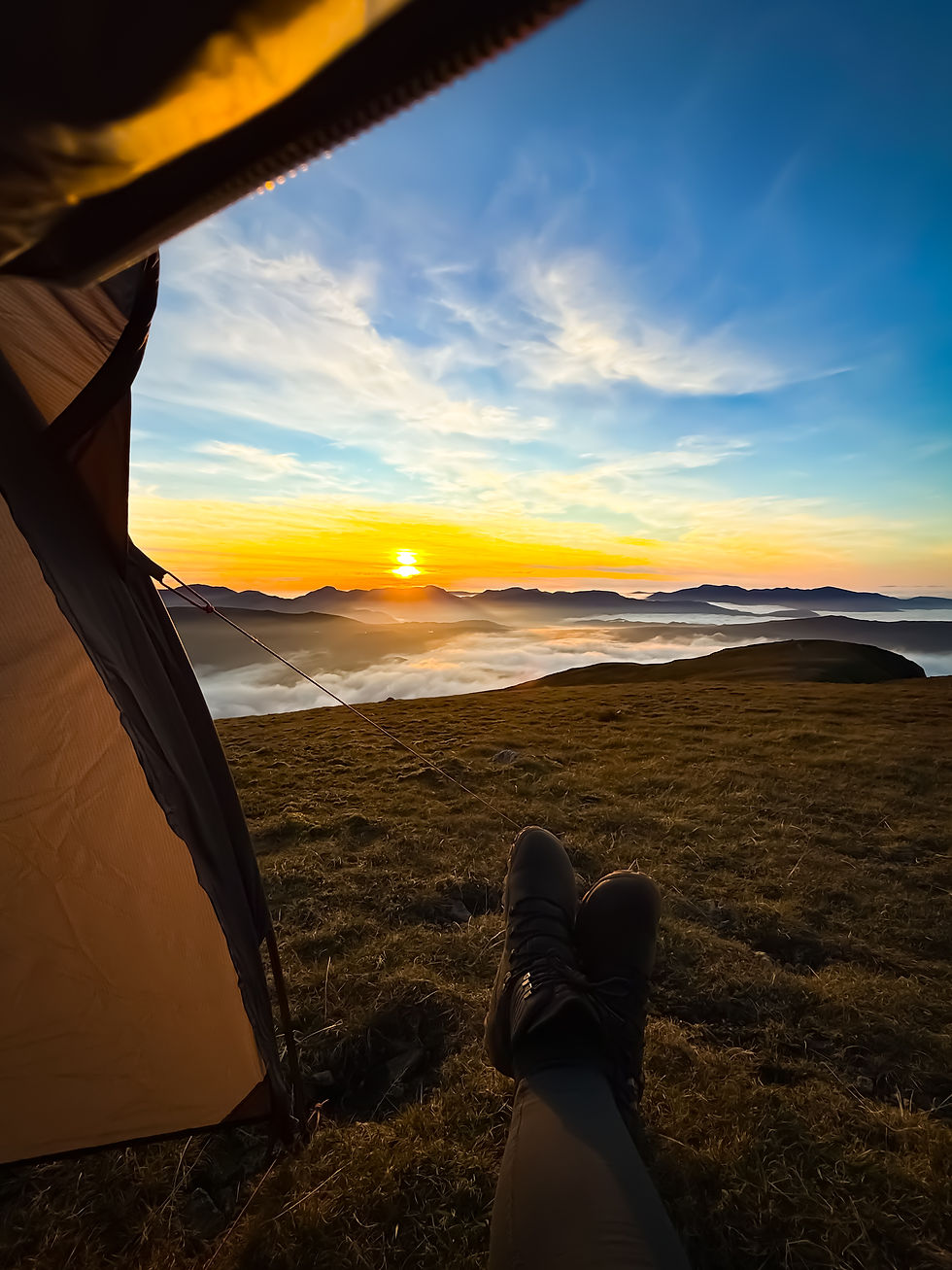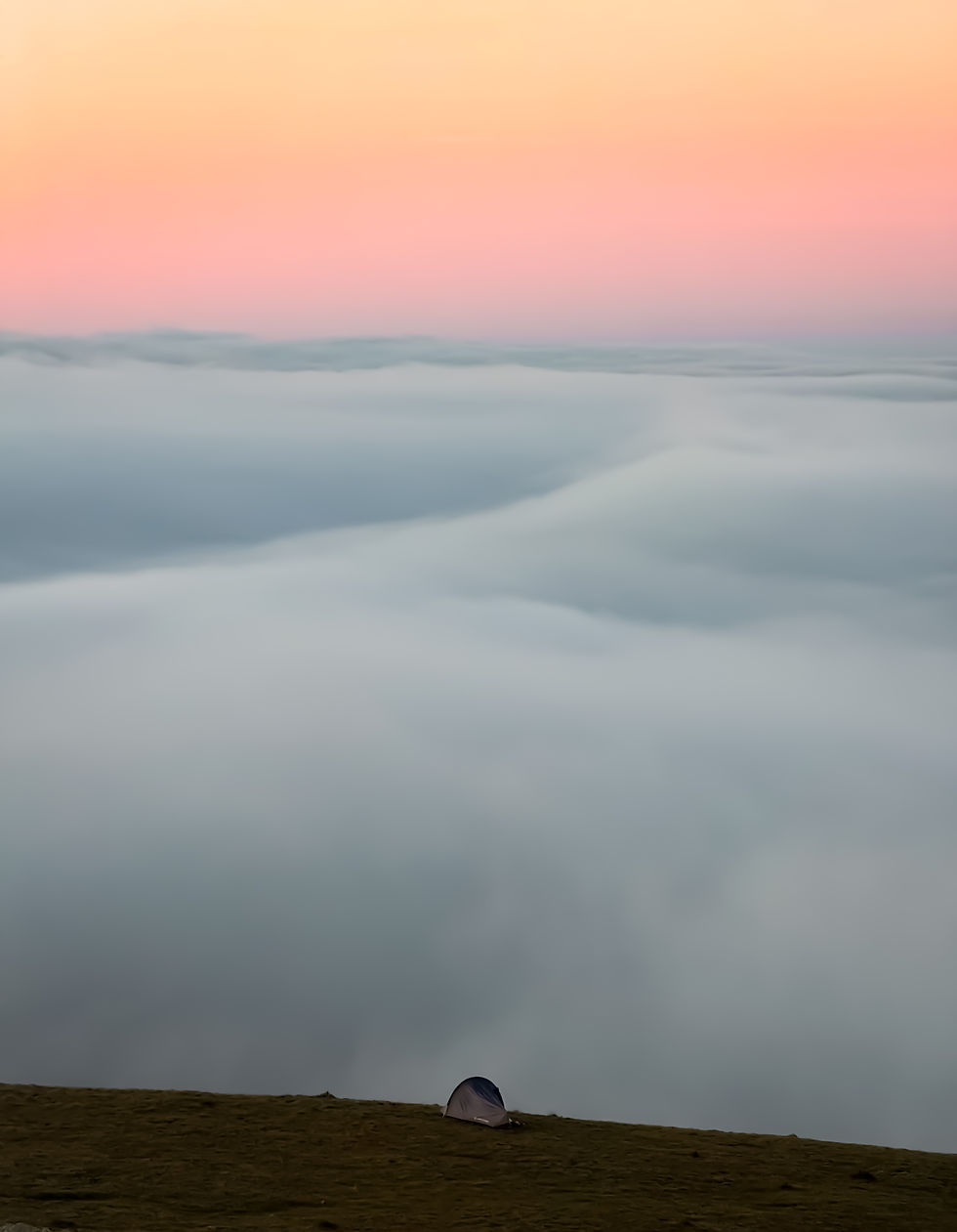Lifesystems Solo Peak Tent Review
- Kate
- Oct 31
- 5 min read

Introduction
If you’re the sort of hiker who counts every gram, keeps your pack minimal and heads out solo in search of wild nights under canvas, then the Solo Peak from Lifesystems is very much in your cross-hairs. It’s positioned as a one-person tent designed for ultralight bike-packing, fastpacking and compact back-country missions. The brand claims packed weight of just 1kg, with a compact size and design that keeps things as simple and efficient as possible.
In this Lifesystems Solo Peak Tent review I break down what it does well, where it compromises (because ultralight always means trade-offs), and whether I’d recommend it for solo adventures.
Features & Specifications of the Lifesystems Solo Peak Tent
Let’s start with what the tent brings to the table:
Packed weight: ~ 1000 g (1kg) including poles, pegs, repair kit and carry sack.
Dimensions: Flysheet 250 L × 130 W × 90 H cm; Inner tent 230 L × 76-50 W × 77 H cm.
Packed dimensions: 32 L × 15 W × 12 H cm.
Materials & build: 20D siliconised (rip-stop) nylon fabrics for both flysheet and groundsheet, fully taped seams, hydrostatic head rating of 3,000 mm for fly and groundsheet.
Frame / structure: Lightweight aluminium frame, plus a vertical foot-pole to maximise usable interior space, quick-pitch design (inner already attached to the flysheet).
Ventilation / comfort: Large mesh panels in the inner (three-quarters mesh), door and foot vent panels, guy-lines & tensioners.
Extras: Comes with 10 pegs (good touch), repair kit included.

What I Liked about the Lifesystems Solo Peak Tent
✅ Ultra-lightweight & compact
At just 1 kg, it’s ideal for solo missions where pack weight really matters. It compresses down small enough to fit inside a standard backpack or even strapped to a bike frame.
✅ Quick to pitch
The single-hoop structure and pre-attached inner make setup straightforward — perfect when you’re trying to get camp sorted before the rain moves in.
✅ Quality materials
For a lightweight tent, it’s surprisingly tough. The silicone-coated nylon and taped seams feel durable and weather-resistant.
✅ Ventilation & condensation control
Plenty of mesh and a small foot vent help prevent that damp, stuffy feeling that can plague smaller tents.
Gear Reviews:
What to Consider about the Lifesystems Solo Peak
❌ Not ideal for high winds or winter
It’s a solid 3-season shelter but not built for full exposure in alpine or winter conditions. You’ll want something sturdier for snow or sustained high wind.
❌ Small porch space
There’s just enough room for boots and a small pack, but cooking or storing larger gear will be tight.
❌ Limited headroom
If you’re tall, sitting upright is a bit of a squeeze. The vertical foot pole helps, but it’s still compact.
Use SHESGOINGSOLO10 for 10% off VivoBarefoot Shoes
How It Performs in Real Use
From the Walkhighlands review: the tent was tested in wild camping around the UK (Perthshire, Cairngorms) in wet and breezy conditions. Key points: the weight claim holds up, it pitched easily, handled moderate rain well, and snuggled reasonably in windy conditions for what it is.

Who It’s Best For
Solo hikers, fast-packers, bike-packers, or anyone where pack weight is a major consideration and you’re comfortable with a minimalist setup.
Those who will primarily use it in 3-season conditions, not deep winter or alpine storms.
Adventurers who prioritise speed, compactness, and minimal fuss over extended luxury.
Someone who values getting out early, hiking late, and doesn’t mind a slightly tighter space in exchange for light weight.
Should You Buy It? My Lifesystems Solo Peak Tent Review
Yes — I recommend it if your priorities align with what it offers: ultra-light weight, good build quality, compact pack size, decent all-round weather protection for typical UK/European 3-season use.
If, instead, you prioritise a large vestibule, more interior space, four-season strength (snow & high wind), or extra durability for year-round heavy use, you might consider stepping up (and accepting a heavier pack weight). But for its price point (~ £229.99 RRP) and spec, the Solo Peak offers excellent value for what it is.
Gear Reviews Part 2:
Review: the Lifesytems Solo Peak Tent it’s a great tent for being out solo, light, mobile and minimalist. Just be honest with yourself about the conditions you’ll face, and don’t expect it to behave like a large expedition tent.

Final Thoughts
On your next solo outing, whether it’s a wild camp in the Dales, a bike-packing overnight or a fastpack through remote hills, the Solo Peak is going to be one of those pieces of gear you pack without much compromise. You’ll know you’ve saved weight, you’ll know you’ve got decent protection, and you’ll know you’re geared more for moving than lounging. For many of us that’s a sweet spot.

FAQs - Lifesystems Solo Peak Tent
1. Is the Lifesystems Solo Peak Tent waterproof?
Yes — both the flysheet and groundsheet have a 3,000 mm hydrostatic head rating, meaning they’re waterproof enough for typical UK rain and wet ground.
2. How easy is it to pitch?
Very easy. The inner tent is already attached to the flysheet, so it pitches as one. You simply slide in the main pole, peg it out, and it’s ready in about 5–7 minutes — ideal for wild camping or late arrivals.
3. Can it handle strong winds?
It’s stable in moderate wind, but not designed for extreme alpine conditions or winter storms. Always try to pitch with the rear into the wind and use all guy lines for best performance.
4. Is there enough room inside for my backpack?
Yes — but space is tight. There’s enough room to keep smaller items inside with you, and a small porch for boots or a pack. Larger 60 L+ packs will need to be propped upright in the vestibule.
5. How tall can you be and still fit comfortably?
It’s best suited for users under 6 ft (183 cm). Taller hikers will still fit lengthwise but may find the headroom and sloping walls restrictive when sitting up.
6. Does it come with a footprint or groundsheet protector?
No — a footprint isn’t included, but a lightweight groundsheet protector is recommended if you often camp on rocky or boggy terrain to extend the tent’s lifespan.
7. Is it good for wild camping?
Absolutely. The small footprint, muted green colour, and low profile make it ideal for discreet wild camps. It’s quick to set up and take down, leaving minimal trace.
8. How does it compare to similar tents?
It’s most similar to models like the Terra Nova Laser Compact 1 or the MSR Hubba NX 1. The Solo Peak is cheaper and lighter, though not as robust in extreme weather.
9. Can I use trekking poles instead of the tent pole?
No — the Solo Peak uses a fixed aluminium hoop and vertical foot pole system, so trekking poles can’t replace its structure.
10. Would you recommend it for multi-day hikes?
Definitely. For routes like the West Highland Way, the Pennine Way, or multi-day Dales trails, it’s light, reliable, and easy to manage day after day.








Comments